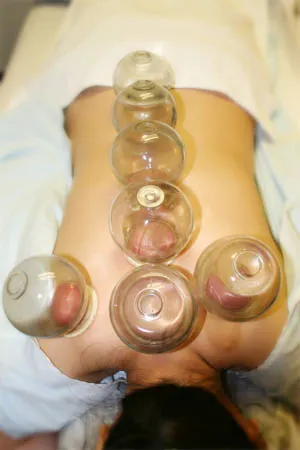Cupping

What is Cupping?
Cupping is an ancient therapeutic technique that has been used in various cultures, including Traditional Chinese Medicine (TCM), Egyptian, and Middle Eastern traditions. It involves creating suction on the skin's surface by placing special cups on the body. The suction draws the skin and underlying tissues upward into the cup, creating a vacuum effect.
There are different methods of cupping, but the most common ones are:
- Cupping:In this traditional method, a flame is briefly inserted into a glass or bamboo cup to create a vacuum. The flame is then removed, and the cup is quickly placed on the skin. As the air inside the cup cools down, it creates a suction effect, pulling the skin into the cup.
- Dry Cupping: In dry cupping, a mechanical pump or suction device is used to create the vacuum instead of using fire.
- Wet Cupping (Hijama): This method involves making small incisions on the skin before placing the cups. The cups draw out a small amount of blood, which is believed to remove toxins and promote healing. Wet cupping is considered a more invasive form of cupping and is often used in specific therapeutic contexts.
Cupping is commonly used for various purposes, including:
- Pain Relief: Cupping is believed to help alleviate muscle tension and pain by increasing blood flow to the affected areas.
- Promoting Circulation: The suction from cupping is thought to stimulate blood circulation and improve the flow of energy (qi) in the body.
- Detoxification: Cupping is believed to draw toxins and impurities from the body, though the scientific evidence for this effect is limited.
- Relaxation and Stress Reduction: Many people find cupping to be a relaxing experience and use it to reduce stress and promote a sense of well-being.
After a cupping session, temporary circular marks or bruises may appear on the skin, known as cupping marks. These marks typically fade within a few days to a couple of weeks.
It's important to note that while cupping is generally considered safe, it may not be suitable for everyone, especially those with certain skin conditions, bleeding disorders, or who are pregnant. As with any alternative therapy, it's essential to consult with a qualified healthcare provider or a licensed practitioner before undergoing cupping.